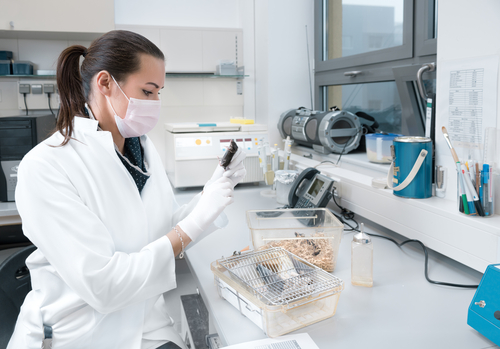Use of Del-1 Protein Reduces Multiple Sclerosis Severity in Mouse Study
Written by |

 In a study entitled “Developmental endothelial locus-1 is a homeostatic factor in the central nervous system limiting neuroinflammation and demyelination” the authors report to have found a new protein, Del-1, that reduces the severity of multiple sclerosis disease in a mouse model of the disease. The study was published in the Molecular Psychiatry journal.
In a study entitled “Developmental endothelial locus-1 is a homeostatic factor in the central nervous system limiting neuroinflammation and demyelination” the authors report to have found a new protein, Del-1, that reduces the severity of multiple sclerosis disease in a mouse model of the disease. The study was published in the Molecular Psychiatry journal.
Multiple sclerosis (MS) is an autoimmune disease that affects the central nervous system. Currently without any cure, MS affects more than 2.3 million people across the globe. The disease is characterized by destruction of the myelin layer within nerve cells leading to a wide range of neurological symptoms affecting visual, motor, and sensory capabilities.
In this study, a team of researchers from the University of Pennsylvania and colleagues discovered that the protein Del-1 (developmental endothelial locus-1), previously identified by the team as an endogenous anti-inflammatory factor, is also highly expressed in the brain. In light of their previous results when studying Del-1 function in periodontitis, the authors hypothesized Del-1 could prevent inflammation in the central nervous tissue. When they analyzed brain tissue from deceased MS patients, they found Del-1 expression was reduced when compared to healthy brain tissue.
In mice models for human MS, termed experimental autoimmune encephalomyelitis (EAE), the authors found decreased expression of Del-1 in n the spinal cords of these mice. The researchers performed further studies and found that mice lacking Del-1 exhibited more severe attacks of the EAE accompanied by more damage to myelin when compared to healthy mice. Moreover, these mice had increased penetration of inflammatory cells in their spinal cords due to higher levels of IL-17, a pro inflammatory cytokine predominantly produced by activated T cells. When these mice were treated with Del-1, the authors observed no more EAE attacks.
[adrotate group=”4″]
George Hajishengallis, a professor of microbiology in Penn’s School of Dental Medicine and study author, commented, “We see that two completely different disease entities share a common pathogenic mechanism. And in this case that means that they can even share therapeutic targets, namely Del-1.”
Senior author Triantafyllos Chavakis of Germany’s Technical University Dresden, added, “This treatment prevented further disease relapse. Thus, administration of soluble Del-1 may provide the platform for developing novel therapeutic approaches for neuro inflammatory and demyelinating diseases, especially multiple sclerosis.”
Hajishengallis concluded, “It’s amazing that our work in periodontitis has found application in a central nervous system disease. This shows that periodontitis can be a paradigm for other medically important inflammatory diseases.”





